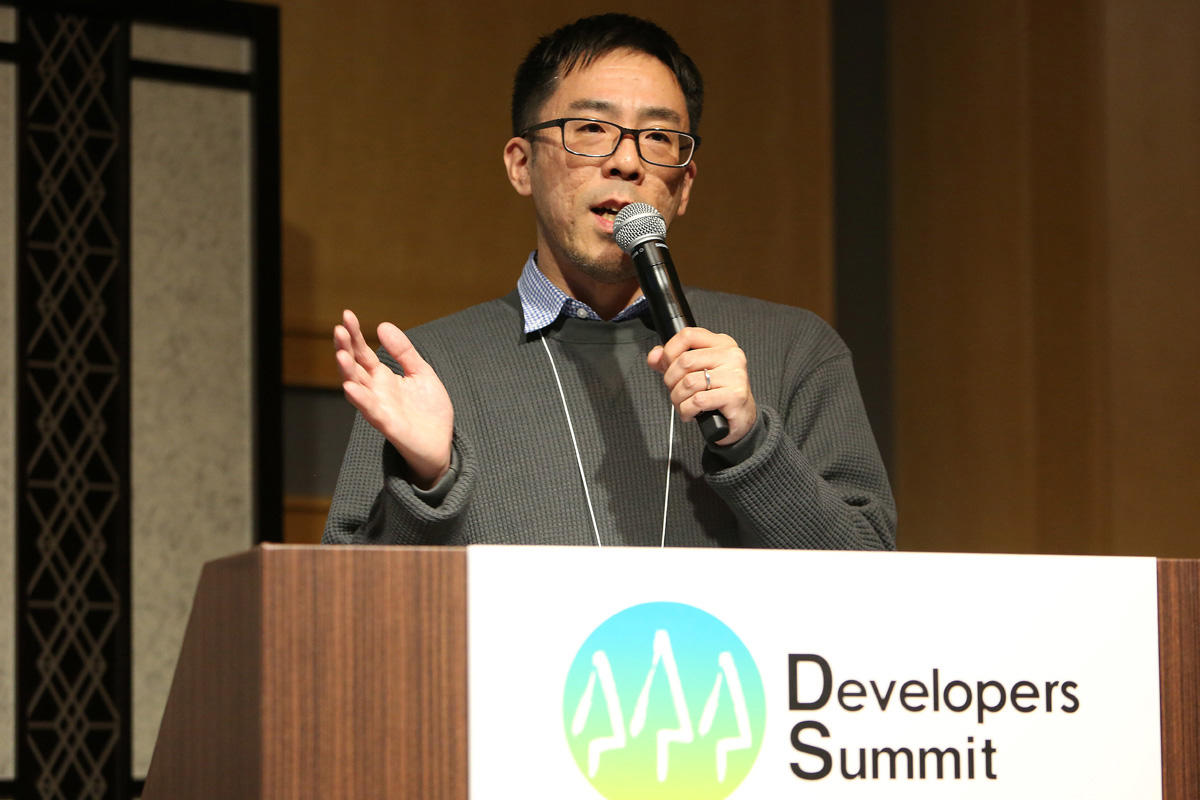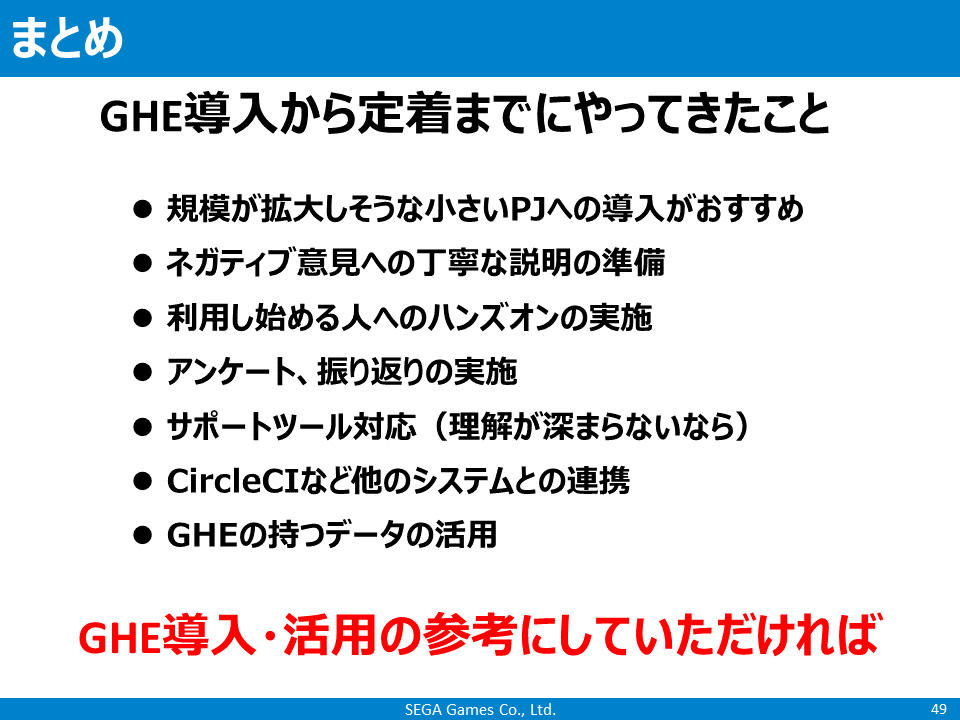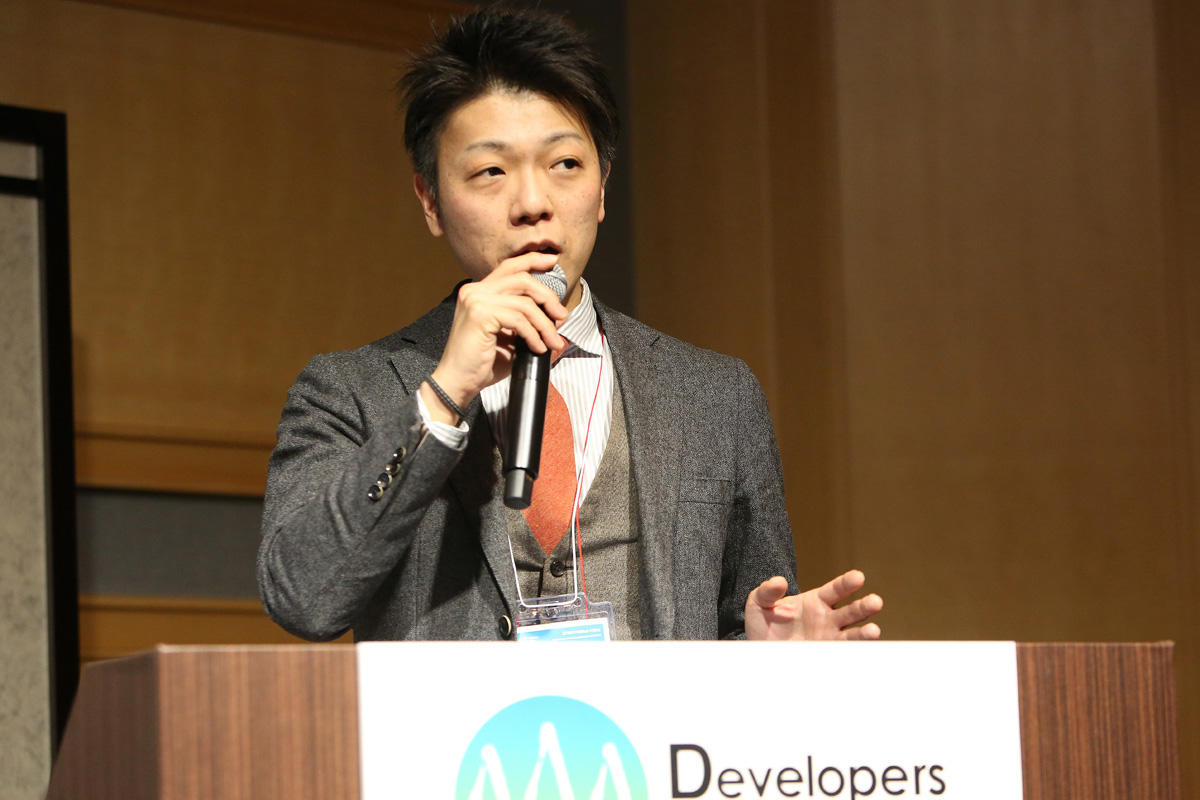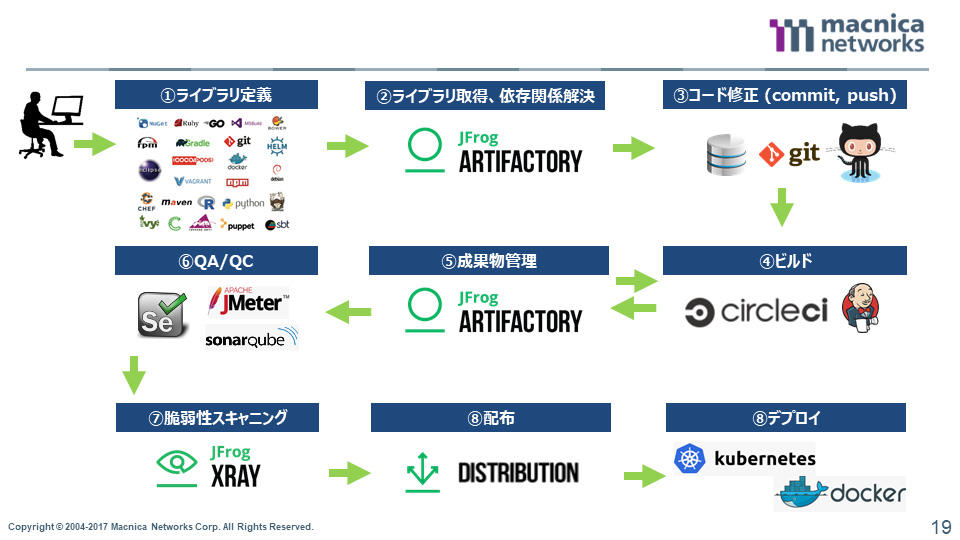Specifications/Technical Information
Application for evaluation machine
- FAQ
Developers Summit 2019

[15-E-7] Carefully Selected Tools for Realizing DevOps in a Secure Environment
Friday, April 4, 2019
In modern software development, practicing DevOps and building advanced development platforms are essential. The backbone of this system is a number of excellent products such as version control tools and CI/CD tools. In the first part of this session, Mr. Nobuo Ueda of SEGA Games Co., Ltd. will talk about "How we changed the development system by introducing GitHub Enterprise for mobile game development", and in the second part, Mr. Tatsuya Nemoto of Macnica and Kayo Hirota explained, ``How DevOps evolves with the introduction of various tools.''
From introduction to establishment of "GitHub Enterprise"

SEGA Games Co., Ltd. Development Promotion General Headquarters 3rd Management Department Technical Research Section Manager Nobuo Ueda
Sega Games' smartphone game development originally used Subversion as a version control tool. However, in 2016, in order to renovate to a more modern development environment, we started a trial introduction of "GitHub Enterprise".
"Around May 2016, we set up an introduction committee with three people. At this point, we purchased 50 licenses and first introduced GitHub to new projects. This policy was correct. Explanation to users. We also held a party, and we were able to get off to a smooth start.” (Mr. Ueda, Sega Games)
A few months later, we expanded the number of licenses from 50 to 100. One of the three members of the introduction committee became a full-time member of GitHub dissemination, and implemented infrastructure maintenance and troubleshooting. Around December 2016, employees began to give positive feedback to GitHub.
“At this point, we persuaded the company to proceed with the company-wide introduction. I will introduce how I persuaded them.
First of all, "Is it not good to stay with Subversion?" ’ means. In response to this opinion, we introduced trends in Google Search Trends. Subversion searches are down, GitHub searches are up. We made it clear that many companies are switching from Subversion to GitHub.
Next, the opinion that "I don't really understand the value of reviews". In response to this, he explained that reviewing on a pull request basis reduces the need for rework, and has a large economic advantage.
“Are free GitHub clones no good? '', but I explained that GitHub is the de facto standard, so it's easy to get information, and that if you use the Enterprise version, you can receive useful support from Macnica.'' (Mr. Ueda, SEGA Games)
As a result, full-scale introduction started in 2017 with approval from the company. When starting a new project, we changed the operation to manage the repository on GitHub. The introduction committee has further strengthened support, expanding documentation, in-house hands-on, and troubleshooting. As a result, the number of supporters gradually increased.
However, there was still a problem. In game development, file management is not just for engineers. Naturally, designers and planners also work with files. In the process of integrated GitHub management of all files, a non-engineer member commented, "It's hard to operate Git. Please switch back to Subversion."
その課題に対し、「Pengit」というGitHubクライアントを作成することで対応した。このツールはGUI上で簡単に操作できるため、Gitの学習コストが大幅に軽減可能だ。こうした施策を続けたことで、2018年の秋にはGitHub Enterpriseが全社的に浸透。GitHub導入による成果も、明確に表れてきたという。
Currently, SEGA Games is promoting a more advanced utilization method on two axes. One is cooperation with other tools such as "CircleCI". The other is to collect data from GitHub Enterprise to analyze trends common to successful projects.

"By using GitHub, we are in the process of establishing a system to improve the development system itself," said Mr. Ueda of Sega Games.
Handpicked Tools to Support DevOps
In the second half of the session, Mr. Nemoto and Mr. Hirota of Macnica took the stage. He explained the company's business and JFrog, a software release platform that supports DevOps.
Macnica is the primary domestic sales agent for tools such as GitHub Enterprise, a version control tool, CircleCI Server, which implements CI/CD, and the aforementioned JFrog. These tools and ecosystems can support the entire development lifecycle, from source code management to continuous updates.

Tatsuya Nemoto, Manager of Section 2, AI & Software Business Department, Sales Division,Macnica
「当社が提供しているソリューションは、ただのツール導入ではありません。検討から導入、運用、拡張に至るまで、専任のテクニカルサポートによるご支援をさせていただいております。
When introducing an enterprise version of a foreign vendor's product, it would be inconvenient if each tool was introduced separately, as the support points would be different and the quality of support would vary from company to company. We have built a support system that allows our customers to use our software with peace of mind by fully understanding their software development status, constraints, and future requests for additional changes.'' (Mr. Macnica Nemoto)
JFrog, a software release platform purchased by over 5,000 companies overseas, is not so well known in Japan. However, overseas, they are leading the world of DevOps, receiving many brilliant awards such as "DevOps Acceleration Innovators", "Best DevOps Commercial Solution for 2018", and "'Best in Show' in Software Development - DEVOPS".
Universal package manager "JFrog Artifactory" that manages binary files at high speed, "JFrog Xray" that checks for license violations, vulnerability scans, and identifies the scope of impact, and "JFrog Distribution" that distributes updates to sites and IoT devices. ” is provided as an all-in-one enterprise package called “JFrog Enterprise+”.

Kayo Hirota, Manager of Section 2, AI & Software Business Department, Sales Division,Macnica
"JFrog's vision is 'Liquid Software.' It means that developed software is updated continuously like flowing water. In other words, the idea is that not only SaaS but also software used in IoT etc. should be constantly updated. .JFrog's solution is a mechanism that realizes a speedy release cycle and continuous updates.'' (Mr. Macnica Hirota)

Development lifecycle using JFrog services
By using each service of JFrog, the development life cycle will be as shown in the above diagram. JFrog Artifactory will also take care of acquiring the libraries necessary for the product, resolving dependencies, and managing deliverables after code modifications and builds.
The next step is JFrog Xray. The tool works with more than 10 types of security databases and continues to update vulnerability information on a daily basis. JFrog Xray can scan products on its own, or it can be integrated with other specialized scanning tools. In this way, JFrog's services are unique in that they can be incorporated in a natural flow without interfering with the existing development lifecycle.
"Almost all of the series of tasks required for DevOps can be automated. Please introduce the tools and build a new world view of DevOps." (Mr. Macnica Hirota)
*This article is reprinted with permission from CodeZine.
Feel free to contact us about GitHub Enterprise
電話でのお問い合わせ 045-476-2010
Inquiry/Document request
Macnica GitHub
- TEL:045-476-2010
- E-mail:github-rt@macnica.co.jp
Weekdays: 9:00-17:00